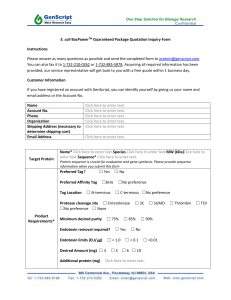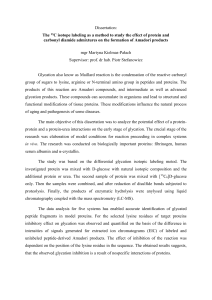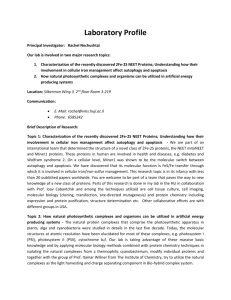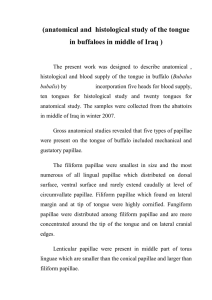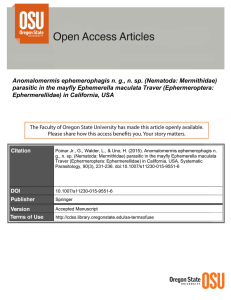AGEs
advertisement
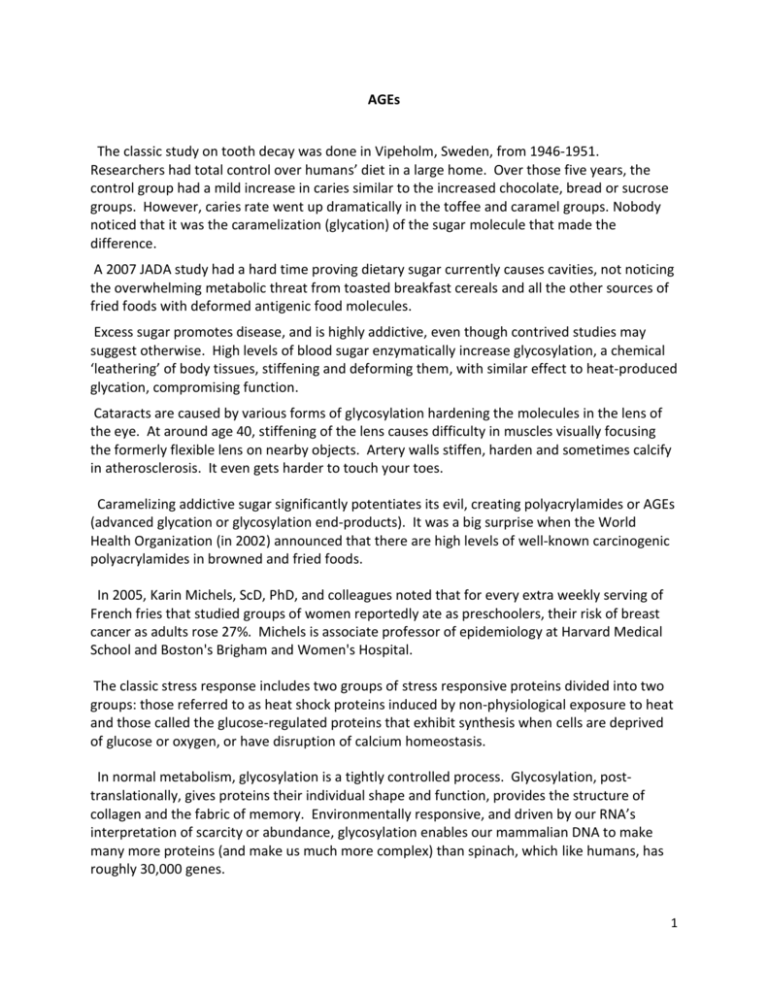
AGEs The classic study on tooth decay was done in Vipeholm, Sweden, from 1946-1951. Researchers had total control over humans’ diet in a large home. Over those five years, the control group had a mild increase in caries similar to the increased chocolate, bread or sucrose groups. However, caries rate went up dramatically in the toffee and caramel groups. Nobody noticed that it was the caramelization (glycation) of the sugar molecule that made the difference. A 2007 JADA study had a hard time proving dietary sugar currently causes cavities, not noticing the overwhelming metabolic threat from toasted breakfast cereals and all the other sources of fried foods with deformed antigenic food molecules. Excess sugar promotes disease, and is highly addictive, even though contrived studies may suggest otherwise. High levels of blood sugar enzymatically increase glycosylation, a chemical ‘leathering’ of body tissues, stiffening and deforming them, with similar effect to heat-produced glycation, compromising function. Cataracts are caused by various forms of glycosylation hardening the molecules in the lens of the eye. At around age 40, stiffening of the lens causes difficulty in muscles visually focusing the formerly flexible lens on nearby objects. Artery walls stiffen, harden and sometimes calcify in atherosclerosis. It even gets harder to touch your toes. Caramelizing addictive sugar significantly potentiates its evil, creating polyacrylamides or AGEs (advanced glycation or glycosylation end-products). It was a big surprise when the World Health Organization (in 2002) announced that there are high levels of well-known carcinogenic polyacrylamides in browned and fried foods. In 2005, Karin Michels, ScD, PhD, and colleagues noted that for every extra weekly serving of French fries that studied groups of women reportedly ate as preschoolers, their risk of breast cancer as adults rose 27%. Michels is associate professor of epidemiology at Harvard Medical School and Boston's Brigham and Women's Hospital. The classic stress response includes two groups of stress responsive proteins divided into two groups: those referred to as heat shock proteins induced by non-physiological exposure to heat and those called the glucose-regulated proteins that exhibit synthesis when cells are deprived of glucose or oxygen, or have disruption of calcium homeostasis. In normal metabolism, glycosylation is a tightly controlled process. Glycosylation, posttranslationally, gives proteins their individual shape and function, provides the structure of collagen and the fabric of memory. Environmentally responsive, and driven by our RNA’s interpretation of scarcity or abundance, glycosylation enables our mammalian DNA to make many more proteins (and make us much more complex) than spinach, which like humans, has roughly 30,000 genes. 1 A cell cannot survive even small changes in the folding of its proteins. Captured over the fourmonth life cycle of our erythrocytes, hemoglobin A1c (glycosylated hemoglobin) is a commonly used measure of recent history of this damaging aging and internal ‘leathering’ effect on our tissues. This is the primary clinical measure of blood sugar control and dietary compliance for diabetics. A major role for the induced heat shock HSP70 family is in chaperoning the refolding of denatured protein, which can restore protein function regardless of the denaturing agent, be it from chemical, environmental, or age related stress. Higher doses of a stressing agent, on the other hand, can overload the system and result in uncontrolled degradation of necessary regulatory molecules, compromising the hormetic effect. Elevated temperature increases lifespan in human fibroblasts and keratinocytes. Heat treatment increases basal levels of various chaperones, reduces the accumulation of damaged proteins, stimulates proteasomal activities for the degradation of abnormal proteins, improves cellular resistance to ethanol, hydrogen peroxide, UV-B rays, enhanced the levels of various antioxidant enzymes and increased the phosphorylation-mediated activities of various stress kinases. The effect of combination of heat and potential hormetic molecules, such as curcurmin, on aging, longevity and differentiation of human cells in culture is excitedly being researched. Threshold levels of exercise can induce HSP70 and can parallel the beneficial effects of heat as a hormetic agent as well as radiation, sunshine and ethanol, under appropriate conditions, may provide some of the same benefits of exercise. Calorie restriction (CR) mimetics, which can intervene in inappropriate protein cross-links, are antiglycation agents. CR has been found to reduce the extent of glycation of blood and tissue proteins and the age related accumulation of glyco-oxidation products in skin collagen. The pro-aging effect of glucose signaling on life span correlates with an increase in reactive oxygen species and a decrease in oxidative stress resistance and respiration rate. On the other hand, the anti-aging effect of both calorie restriction (and the Delta git3 mutation) is accompanied by increased respiration and lower reactive oxygen species production. Calorie restriction mimetics inhibit, repair (break)/and or absorb (stabilize intermediate in the cross-link progression) glycation products and avoid the age and disease related consequences without diet restriction. Physiological conditioning (hormetic) agents include aminoguanide, carnosine, ethanol and angiotension II receptor inhibitors. Aminoguanidine is an inhibitor of AGE formation and prevents increases in aortic and carotid arterial wall stiffness in diabetic rats. Carnosine, a dipeptide natural neuropeptide, inhibits glycation and even targets glycated proteins for removal. Carnosine prevents oxidation and protein modification, decreased carbonyls, lipid peroxides and improves age related behavior. Ethanol can significantly reduce hemoglobin Amadori products that are intermediates in the cascade of cross-linking of proteins in diabetic rats. 2 While stiffening our collagen internally and becoming sequestered as brown age spots in our skin, AGEs mimic heat shock proteins (first found in life-threatening forest fires or in response to bacterial infection), primitive messenger molecules of alarm and stress, similar in molecular shape and action to endotoxin. Gram negative bacteria (like decay-causing streptococcus mutans) have lipopolysaccharide endotoxin mimics as part of their cell wall. Just a few molecules of endotoxin can create an exaggerated overblown response of the immune system that locally can lead to penetrating pimples or liquefying tooth decay or systemically if glutathione is exhausted, to fulminating toxic shock syndrome and death. Toxic shock syndrome is caused by staphylococcus aureus. This normally friendly commensal bacterium changes its metabolism when stressed by low zinc or magnesium environments. Super absorbent tampons suck up minerals locally. This local lack of minerals can be potentiated by low systemic dietary intake or high stress leakage. Stressed bacteria responsively change their metabolisms, thicken their cell walls and produce even more lipopolysaccharide that mimics endotoxin. Endotoxin is a potent inflammatory and immune trigger, sometimes even triggering death in the host. Even small changes in global protein folding reflected by increased AGEs trigger NF-kb (nuclear factor kappa-beta, the primary upstream molecule of inflammation) to signal genes to go into survival mode (permanent catabolic alarm) and create need for triage of tissues. Additive stressors might be AGEs, heavy metals, petrochemicals, phthalates or endotoxin. With stress triaging, structural tissues such as bone, teeth, skin, muscles and the filiform papillae of the tongue wane and more easily undergo apoptosis (cell suicide). Fat is the ultimate survival tissue and is preserved, making and keeping one flabby. Nerves and our mobile ‘neurons’ (phagocytic white blood cells) as well as taste buds (such as the fungiform papillae), are considered ‘survival’ tissues and are preserved. Paradoxically, defective cells that normally undergo programmed cell death (apoptosis) have that message cancelled and instead live on and reproduce, becoming swellings, tumors or cancer. When one is in strong health, the top of the tongue is a solid mass of pink ‘shag’ carpeting of filiform papillae. Eastern medicine noted that the first sign of stress overwhelming repair in one’s life is a red tip to the tongue. Red tip is caused by fading of structural filiform papillae. Geographic or smooth tongue due to fading filiform papillae connotes continuing stress as well as mirroring digestive difficulty. Red spots, of fungiform papillae popping up through faded filiform papillae, suggest longer loss of metabolic rhythm accompanied by uncontrolled inflammation, suggesting weakness in the methylating B vitamins, folic acid, B6, B12 and betaine hydrochloride, as well as exhaustion of reduced glutathione, since methylation is important to recycle glutathione. The parts of roots of permanent teeth that commonly get periodontal disease in adulthood develop between the ages of 4-10 years (peaking ages 5-7). Root-bound remnants of guiding epithelial cells, called rests of Hertwig are programmed developmentally to die by apoptosis. At 3 this peak of developmental strain, excessive stress messaging interferes with programmed cell death of these developmental cells antigenically marked for the exterior, and they live on. If the developing child has weak breakfasts or digestive difficulties, or poisoning from environmental toxins along with ingestion of too many AGEs, which are toasted glycoproteins (glycated sugar and protein molecules) apoptosis becomes compromised. Interiorly inappropriate epithelial cells live on attached to the root. Difficult teething is a sign of increased risk to subsequent adult periodontal disease and that apoptosis is compromised. Overlying gum and bone cells are programmed to quietly disappear and die by apoptosis over an erupting tooth. These remaining epithelial cell rests of Hertwig (which sometimes calcify into enamel pearls or projections) create the typical clinical pattern seen in adult periodontal disease. Later in life, when cellular immunity becomes disabled and humoral immunity is responsively turned on and up, these remaining antigenic cells are attacked by internal immune oxidative ‘melt-down’ inflammatory chemistry. When these autoimmune lesions expand and then break through into the mouth, they become infected with the characteristic ‘causative’ bacteria of periodontal disease, from the now hypoxic biofilm, fueled by inflammatory byproducts and environmentally encouraged into pathogenicity. Puffy, hypertrophic gums connote increased fat and inflammatory cell survival due to diminished apoptosis (cell suicide or programmed cell death). Downstream stress-induced apoptotic signaling causes periodontal ligament and other structural cells to wither. When cellular immunity is exhausted or switched off (due to lack of reduced glutathione), overwhelming stress messaging results in thinning bones, hypoplastic shrinking gingiva along with senescent dying periodontal ligament cells. With stress messaging, fat cells, bone gobbling osteoclasts or defective (cancer) cells survive too long due to their compromised apoptosis. Deformed molecules in roasted, toasted, baked, browned, fried, crisped or caramelized foods trigger genetic survival response. Polyacrylamides from cigarette smoking and browned foods are a root cause of civilization’s diabetes epidemic, which begins metabolically as syndrome X, first creating symptoms of hypoglycemia. Similarly, the primary evil of tobacco comes from smoking sugar-cured tobacco and inhaling tasty caramelized AGEs. Ingesting toasted grains or cereals for breakfast sends the same addictive stressful glycoprotein signal, confusing primal repair, messaging and memory systems and triggering blood sugar to burst out of normal metabolic controls. In response, survival metabolism thins skin, bones and muscles while it retains fat (flab), inflammatory white blood cells, nerve cells and fungiform taste buds, creating the smooth tongue with ‘strawberry spots.’ The primary daily stressor is an incomplete breakfast. If the morning gut does not contain programmed nutritional needs for the day, the body reverses its major anabolic repair tide of the day, cannibalizing structural parts, preserving fat and other survival cells. Breakfast skippers have extreme fat retention (often with high serum cholesterol) that creates visible 4 sheets of yellow ectopic sebaceous cysts seen deposited inside the translucent pink mucosa of lips and cheeks called Fordyce’s granules. Toast, crackers, waffle, pancake, muffin, bagel, bun or boxed cereal for breakfast, indeed does make us ‘toast,’ by creating constant stress messaging to our immune system. Before we know it, one’s modern diet becomes primarily ‘cakes’ and cookies, spiked with ‘shakes’ of metabolically poisonous high-fructose corn syrup sweetened yogurt. If one is strong and healthy, to lightly toast, brown or caramelize, on occasion, seems a safe mild stress! Mild to moderate stress actually makes an organism stronger and more resistant to new stressors by upregulating expression of certain genes. This paradoxical effect where a little bit of poison or stress has benefit, is called hormesis. Mild stresses are light exercise, some sunshine, alternating hot and cold showers or sauna and snow, large doses of vitamin C, 1-2 alcoholic beverages per day, the occasional chocolate and caramel. Avoid crisp and burnt! Marinate before grilling (at low temperature). Eat only undercooked cookies. Stress-messaging that occurs during daily repair tides creates a skewed survival metabolism. Confusing cues of civilization interact with our primitive genes’ expression. Changes in gene expression result in retaining increased flab (especially the apple shaped tummy, the fat upper back and the feared upper-arm extra ‘waving muscle’), as well as increasing irritability, inflammatory pain and autoimmunity of colic, tooth decay, periodontal diseases, TMJ, TMD, facial pain, fibromyalgia, heart disease, cancer and depression. This flabby ‘apple shaped’ or ‘thick around the middle’ adapted allostatic survival state is currently called metabolic syndrome X, hypoglycemia or pre diabetes. The autoimmune imbalances called cancer result from glutathione exhaustion, low energy and a hypoxic state (low oxygen). Cancer is extremely slow healing due to disabled or distracted dendritic cellular immunity due to chronic pathogenic biofilm. One dismantles cellular immunity by losing daily anabolic and catabolic rhythm. Typical rhythm busters are sleeping late, skipping or eating incomplete breakfasts as well as partying or eating too much after 8PM. Even worse is being awake for the late evening news or ingesting more than just a taste of refined flours, sugar or alcohol. Toasted sugars increase risk to difficult teething, tooth decay, diseases of the gums and supporting bone, allergies, TMJ pain, attention deficit disorders and expression of the autistic spectrum, depression, schizophrenia, gall bladder disease, heart and artery disease, stroke and cancer. With enough balancing messages of abundance from the dualistic steroid receptors to our nuclear DNA, gene expression is changed. Now vigorous structural filiform papillae restore the tick pink shag carpeting to the tongue; the mouth stays free of pathogenic biofilm effortlessly; flab turns to firm; tumors shrink and defective cells quietly commit apoptotic cell suicide daily. Messaging of abundance comes from the attitude of gratitude, sunshine, rhythm, effective sleep, sustaining breakfasts, soaked seeds, nuts and grains, raw or barely cooked eggs, 5 vibrant vegetables, fresh pressed vegetable juices, and fermented foods. The beneficent steroid receptor also responds to fat-soluble vitamins A, D, Es, Ks, steroid hormones, bile, retinoids and other sun generated pigments, proanthocyadinins, resveratrol and the salvesterols, aromatic essential oils and foundationally the omega-3 and omega-6 essential fatty acids. Steven N. Green, DDS, 10261 SW 72 St., #106, Miami, FL 33173, 305-273-7779 August 26, 2009 6
